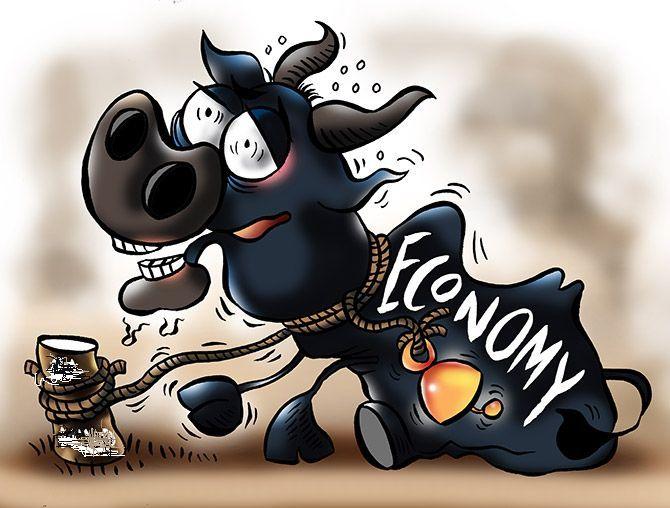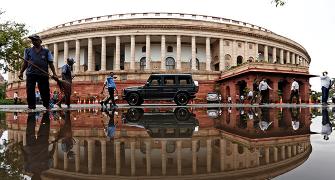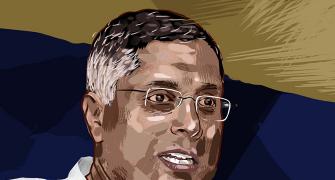'A sustainable growth rate of 8 per cent is evidently some distance away,' says T N Ninan.
Illustration: Uttam Ghosh

Annual reports on countries, done by the World Bank and International Monetary Fund, are almost always politely worded and any criticism sugar-coated to the extent possible.
Decoding the message that is masked by the politeness needs work. But even by the diplomatic standards of the Washington twins, the Fund's latest annual report on India is notable for being suffused with optimism, with broad-based approval of the government's macro-economic management and reform measures.
Economic growth is expected to continue its recovery into next year, settling eventually at a medium-term rate of 7.75 per cent (though with some downside risks), and thereby setting the pace for the rest of the world.
Inflation last year was at a 17-year low, and monetary policy actions meet with approval.
The economy's external account could come under pressure, but there is no cause for worry as the balance of payments stays positive.
There are mildly cautionary words on how fiscal correction could be sharper, and the possibility of continued monetary tightening.
At the same time, the report notes that doing business has become easier, foreign investment rules have been further liberalised, infrastructure investment is happening, the bankruptcy law has gone into effect and the goods and services tax will have positive effects once the wrinkles are ironed out.
The idea that 'the elephant is running' may be over-stating it a bit, since economic growth is no faster than the average for the past decade, but the Modi government should be pleased.
The report presents a list of what a post-election government would need to focus on: Reform of labour laws, strengthening the capacity of the government-owned banks to function properly, building infrastructure further, reforming agriculture, containing inflation pressures and accelerating fiscal consolidation.
In essence, this is the unfinished business of the Modi government.
There is some criticism too, such as the focus on raising support prices for key agricultural products instead of undertaking other reform measures.
Demonetisation gets a carefully-worded thumbs-down for its substantial impact on growth (1.8 percentage points, if compared with earlier Fund estimates of what growth might have been) and the absence of any positive effects other than the increase in tax revenue in relation to GDP.
The charts on digitalisation of payments, balances in Jan Dhan accounts and the extent of cash in relation to GDP show no sustained benefits.
Also, a clear preference is expressed for expanding employment in the organised sector (not more pakoda-walas, please).
Project clearances are seen to face continued delays on account of land acquisition problems and environmental clearances.
If the report had been drafted more recently, instead of some weeks ago, it might also have been critical of the government's latest tariff hikes.
Critics would be inclined to come down harder on the failures to change labour laws (beyond expanding the scope for contract labour) and the land acquisition rules. '
The Fund's approval of currency policy would also be questioned, since the rupee is clearly over-valued and hindering exports.
Finally, in addressing the twin balance sheet problem, the government has not really focused on the core issue: Improving its banks' internal capabilities for risk assessment and credit management.
The result is that most public sector bank managements, nervous about new loans also going south, have virtually stopped giving fresh corporate credit. The Fund merely asks for more divestment of government holdings in the banks.
The medium-term growth assessment of 7.75 per cent is flattering, given that it implies acceleration from the 7.3 per cent average of the past decade.
But when an economy is in a sweet spot in the very long-term growth cycle, as India is, it should be clocking peak growth rates of 8 to 9 per cent, as the leading East Asian economies did for decades at a time.
India did average more than 8 per cent between 2003 and 2011, but the global economy was on steroids for much of that period. And the twin balance sheet problem was born then.
A sustainable growth rate of 8 per cent is evidently some distance away.










